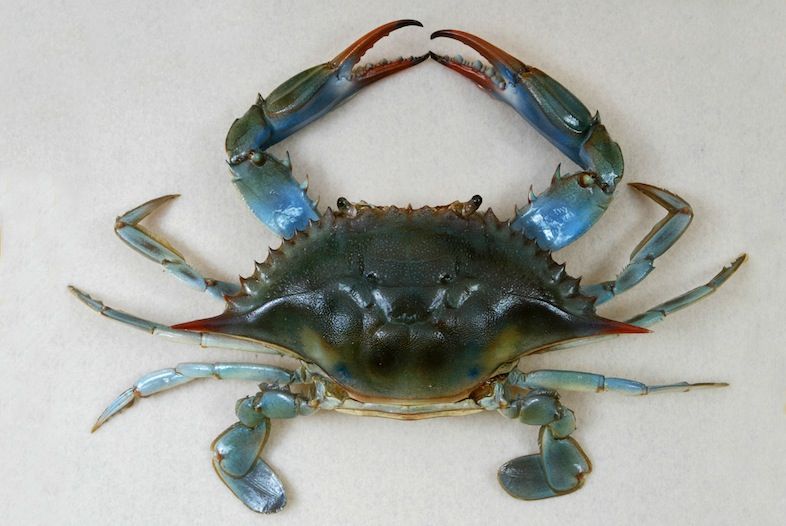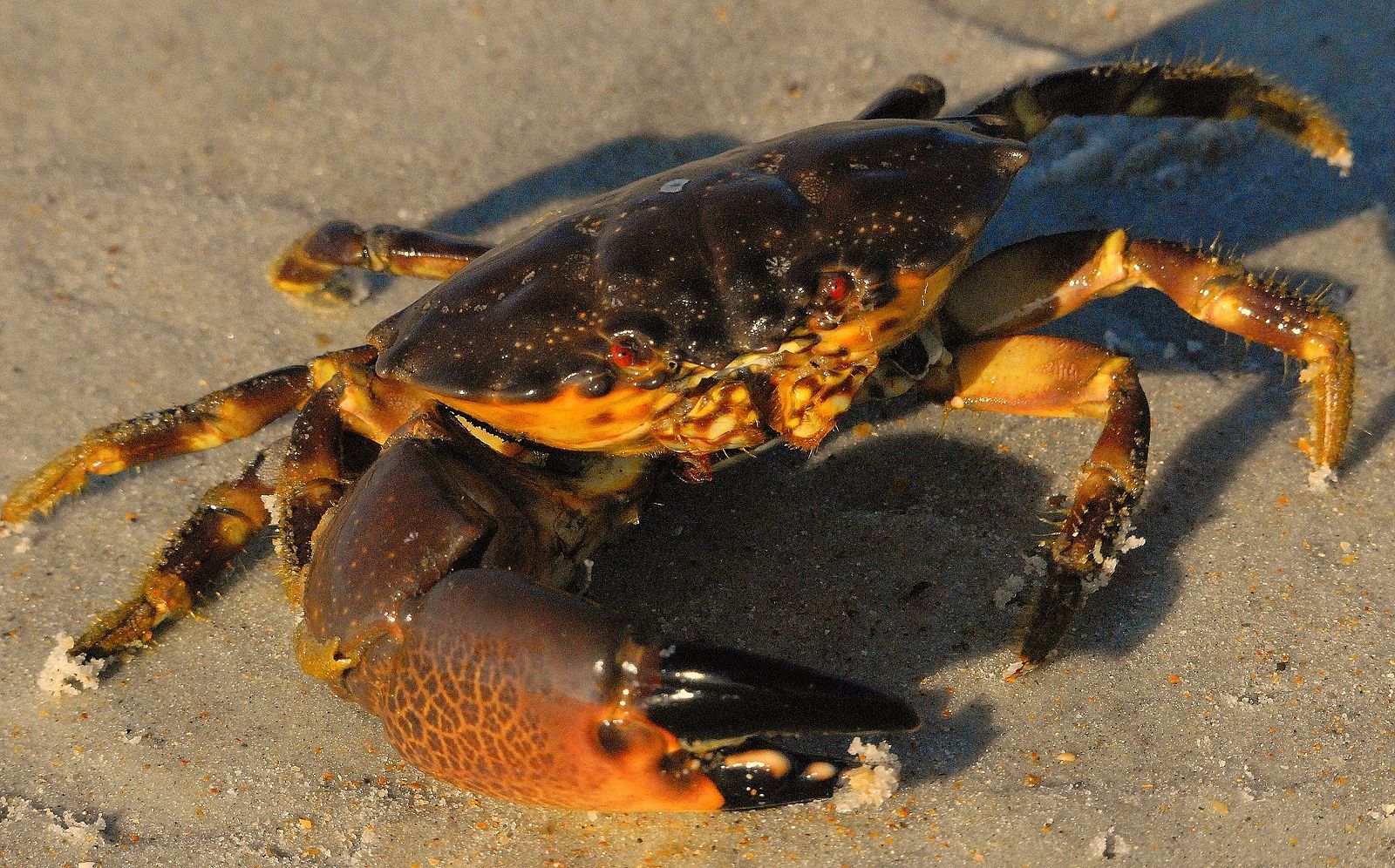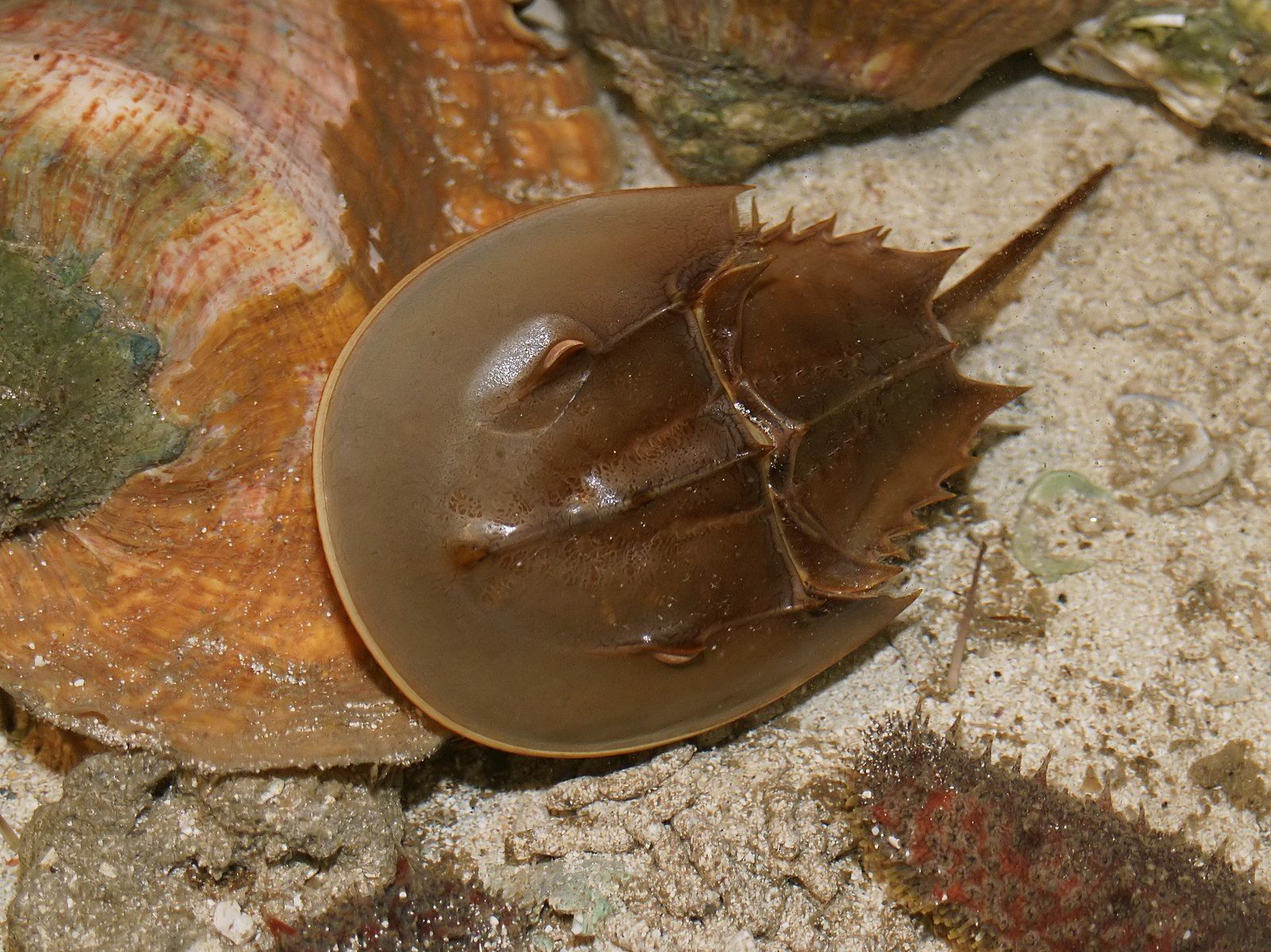
It is a fact of life that in the natural sciences vertebrate animals tend to attract the headlines and the attention, even more so if they are large and conventionally attractive. We even have a name for this group of organisms: charismatic megafauna. The previous post had a heavy emphasis on these ‘wildlife ambassadors’. This time, we’ll be looking at several of the ‘unsung heroes’ instead. Marine invertebrates are vital to the economy of Florida, and any coastal region for that matter. And I don’t just mean because of how they hold the food web together (although they do). Many invertebrates are harvested commercially, including shrimp and crabs. But how do these important species deal with a hurricane?
Feeling Crabby
We have around a dozen different types of crabs in Florida. They can range from fully marine, to estuarine, to semi-terrestrial. The blue crab, Callinectes sapidus, is mainly found in brackish water and its fishery takes in close to $150 million annually in the USA (though only about $3 million of that is in Florida). When you eat crab, this is usually what is on your plate.

Storm surge from hurricanes can push blue crabs farther inland than usual, but because it also pushes salt water with it, most are able to adapt. However, the most fascinating impact is not on the adult crabs, but on their larval stages. Female crabs release fertilized eggs at estuary mouths and allow ebb tide to carry them out because the larvae require a more saline environment. The eggs and larvae are free-floating, which means that the wind and wave action of a hurricane can actual distribute crab populations more widely in an area (though this is much more pronounced in larger estuaries such as Chesapeake Bay and Albemarle and Pamlico Sounds in North Carolina). This spread can also be detrimental, though, as a storm could drive them towards a more freshwater environment, which they cannot yet survive.
In Florida, one of our more notorious crabs is the Florida stone crab, Menippe mercenaria, as their claws are considered a delicacy. In fact, stone crabs contribute ten times the amount of money as blue crabs in the state. They are a shallow water marine species, but they’re not as likely to get roughed up by the surf caused by a hurricane because they’re also burrowers. They dig holes in the sediment and emerge to forage on mollusks, marine worms, and smaller crustaceans.

In truth, Ian in particular may have been a bit of a boon to the stone crabs here, though in a roundabout way. The season for stone crabs as regulated by the Florida Fish and Wildlife Conservation Commission begins on October 15th, just over two weeks after Ian hit Southwest Florida. The hurricane did so much damage to boats and associated fishing infrastructure (docks, fish markets, and even local restaurants that would offer stone crab) that the harvest got off to a slow start, relieving some pressure on the crabs.
Now, if you know about stone crabs, you might be wondering why that even matters, since they don’t take the whole crab, only remove the claws, which can grow back. First of all, regrowing a limb takes a lot of extra energy, which can put an individual under increased stress. Furthermore, those claws are a stone crab’s primary method of both defense and foraging. Studies have shown mortality rates from 50 to 60% for crabs that have both claws removed and 30 to 40% for those losing a single claw. Thus, while it’s a much more sustainable fishery than many, the hurricane still may have given them a welcome, brief respite.
We’re Not With Those Last Guys
Now, we’re going to move on to another important marine invertebrate, perhaps even more so than the crabs mentioned above that are harvested for consumption. It’s much harder to put a monetary value on this one, but both humans and many other species rely upon its continued existence. The Atlantic horseshoe crab, Limulus polyphemus, is a frequently unacknowledged hero of medical testing.

Despite the name, horseshoe crabs are not actually a type of crab, or any other kind of crustacean. They are chelicerates, a group that includes arachnids (spiders and scorpions). While it has seen some use as fishing bait, its main interest for humans is in its blood. When exposed to air, this blood is blue, not red. The red pigment in our blood comes from the iron in the hemoglobin protein that transports oxygen. Horseshoe crabs (along with other groups including mollusks) have a different transport molecule called hemocyanin, which contains copper instead of iron.
While their blue blood makes them visually distinctive, it is actually a kind of clotting factor found in their blood cells that is of importance to humans. It reacts with certain bacterial toxins in a manner that can be visually identified. This allows for us to test for the presence of bacteria in pharmaceutical treatments, specifically those that come in contact with blood (yes, that includes vaccines, modern vaccination is incredibly safe thanks in large part to this innocuous invertebrate).
Besides their vital role in medicine, a number of species also rely on horseshoe crabs. In particular, migrating shorebirds take advantage of the unique way that horseshoe crabs spawn. They congregate in the intertidal zone in mass numbers, with males clinging to the backs of the females. Eggs are laid in the sand, tens of thousands of them from each female. This is a veritable feast for hungry birds that have been flying from half a world away.
But how do hurricanes affect this species? Horseshoe crabs tend to burrow under the sand and are opportunistic scavengers. They can tolerate a wide range of salinities, so have the opportunity to swim into estuaries to shield them from the worst of the wave action. They also have been found in somewhat deeper waters farther offshore. Because of their nature, it’s difficult to study direct impacts of storms on their populations, but they seem well suited for surviving them. However, their mating strategy does present one particular vulnerability. Major hurricanes can cause severe beach erosion, which can negatively impact their spawning habitat.
Flotsam and Jetsam
There are a wide variety of marine invertebrates that are technically mobile, but so slow that they cannot move out of the way of a hurricane. Many of these get washed up on beaches or even farther inland due to storm surge. The aftermath of a hurricane can look like a wildlife disaster area with all sorts of different species stranded. Sea jellies, like the cannonball jelly in the image at the beginning, are frequent victims of this, as while they do have rudimentary propulsion, they tend to mostly drift. Marine snails are another common storm stranding victim.
Marine detritus is constantly washed up on beaches everywhere. It’s important to remember that while the volume will increase from a major storm, it isn’t likely to have a significant impact on population levels.
Conclusions
The main difference between most marine invertebrates and their vertebrate counterparts when it comes to hurricanes are size and speed. Getting out of the way can be harder because, even if they sense the storm coming, they may not be able to move. Instead, they have incorporated different strategies. These include reproductive behaviors that actually take advantage of increased hurricane dispersal, hiding out in an underwater hole, and just being so numerous it doesn’t matter if a bunch of you wash up on shore and die.
We’re getting close to the end of the ‘Winds of Change’ series, but there’s one important Florida species that we’ve missed so far: the alligator. We’ll talk about them next time.